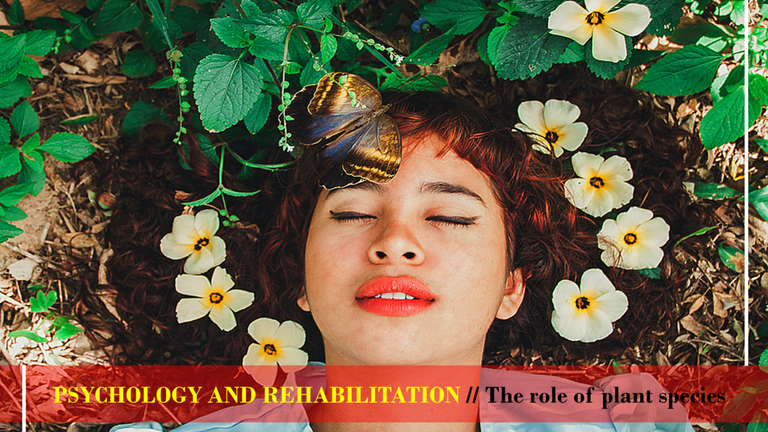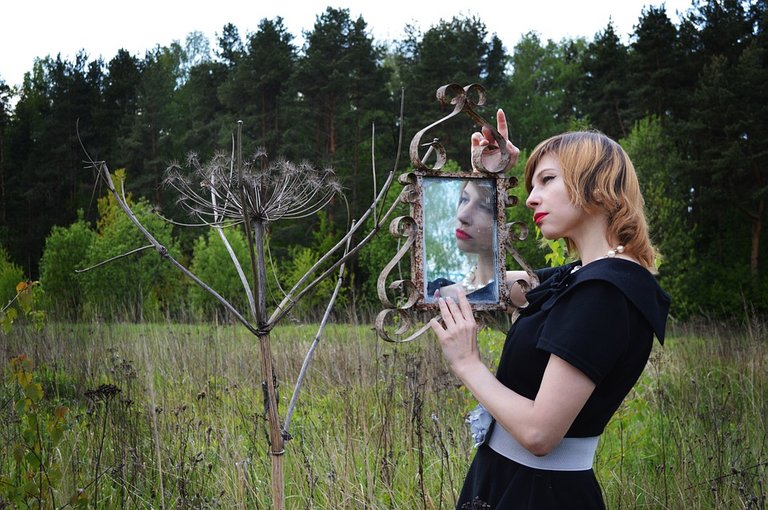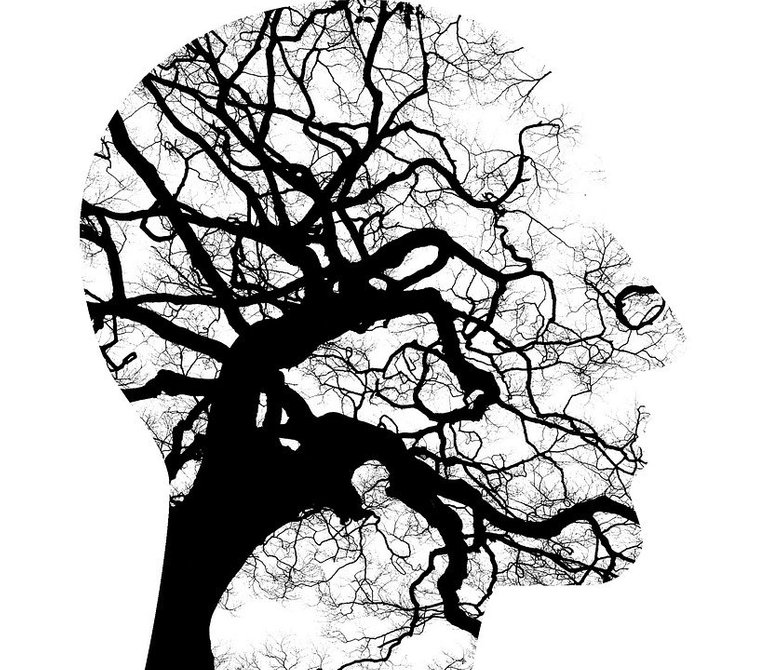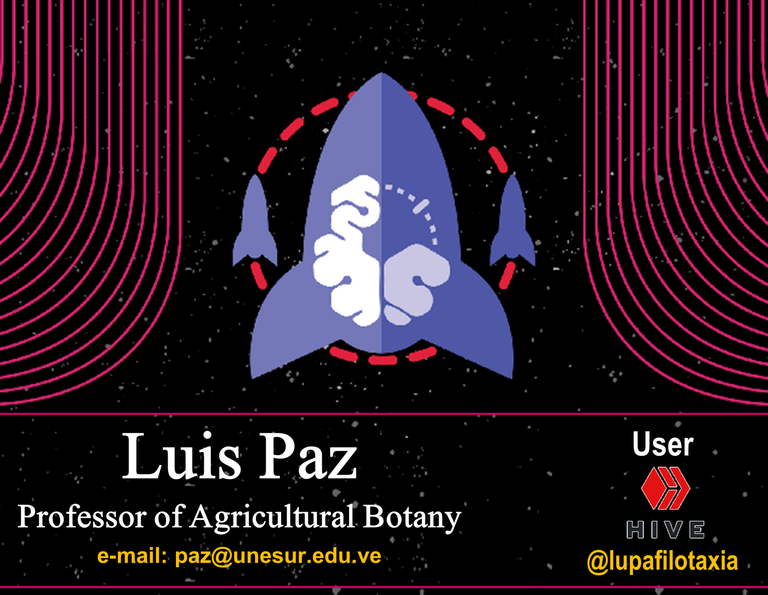PSYCHOLOGY AND REHABILITATION // The role of plant species
(Edited)

Before getting into the subject, I'll make a parenthesis to share with the users of the #Hive platform, especially with the friends of the @Project.HOPE community, that my world revolves around plant species, and not the other way around, so, writing about topics outside the context of botany makes me feel like a grain of sand on the shores of a large tropical beach. I had already commented on another occasion that my relationship with plants began in my childhood, since my mother is a hardened lover of medicinal plants, and without a doubt those years marked in me a before and after with the plant world. I simply see myself reflected in each plant specimen that Mother Nature has given us, and I confess that I see my whole life told through plants, through their system of roots, stems, leaves, flowers, fruits, seeds, fabrics, textures, smells, and flavors.
However, even though at the beginning I dedicated myself to publishing exclusively technical scientific content on the organographic and histological characterization of species of agronomic/forestry/psychoactive/forensic/herbalist interest, and later on the phytopharmacological potentialities that plants provide us with, in the last few weeks I have decided to incorporate into my blog content that I will be sharing with the community, @Project.HOPE in my first issue I talked to you about the biological mechanism as the defensive arsenal of plants, and I appreciate the receptivity you gave to it, however, from this topic I will continue to address other directions in new contributions, since in this opportunity I will describe some approaches to the relationship between Psychology and plant species.

Fig. 2 The green spaces, are in essence our mirror and reason for reflection. Image of public domain, Author: Borodinova V, 2014
Experimental approaches to psychology
If you know that psychology, as a scientific field, has developed multiple experimental approaches, in the search for analyzing and understanding everything related to human behavior, fundamentally each of the mental processes we externalize individuals when they are exposed to certain situations, however, it is necessary to emphasize that, within the multiple experimental approaches in psychology there are therapeutic methods where the use of plant species is employed, tending to examine the behavior and mental processes that people manifest in certain natural and artificial contexts.

Fig. 3 Our thoughts have an intimate connection with the natural context provided by plant species. Image of public domain, Author: Tumisu, 2017
Nature as a medical rehabilitation center
In this regard, it is necessary to remember that previously medical rehabilitation centers, designed to assist and cure people with mental problems, used to take these patients to open places, essentially to wooded areas, gardens, or small green spaces, with well-defined clinical objectives tending in the first instance to provide help, by bringing patients into contact with natural reality, element considered as a technique that provides psychophysical and spiritual welfare, since the recovery of the patient improves significantly, in this sense, it must be stated that this response is associated with the stimulation of the five senses, in a context of enjoyment of fresh air, contact with the sun's rays, fascination of the range of colors, smells and healing properties offered by plant species.

Fig. 4 A context of emotional balance, occurs in full contact with nature. Image of public domain, Author: Hans, 2015
This practice is medical-psychological rehabilitation, where the exposure and contact of the patient with the vegetable species prevails, in the last decades it has been replaced by walls and established walls in hospital centers, that even when, they are characterized to offer comfortable artificial environments, they are far from offering natural conditions as they offer them the vegetable exterior spaces recognized by the capacity to stimulate positive attitudes.

Fig. 5 Today, most medical-psychological rehabilitation centers offer comfortable artificial environments. Image of public domain, Author: Artistic, 2018
Therefore, considering that in the medical-psychological rehabilitation the importance of the contact with the vegetable species begins to lose its historical transcendence, in the following deliveries I will describe the multiple therapeutic potentialities that the vegetable species offer in patients with mental problems.
BIBLIOGRAPHICAL REFERENCES CONSULTED:
[1] Sus C., Anne C., Ulrika S., and Kjell N. Development of the nature-based therapy concept for patients with stress-related illness at the Danish Healing Forest Garden Nacadia. Journal of Therapeutic Horticulture. 2010. Article: Online access
[2] Shan J. Therapeutic landscapes and healing gardens: A review of Chinese literature in relation to the studies in western countries. Frontiers of Architectural Research. 2014; 3; 2: 141-153. Article: Online access
[3] Chukwuemeke P., Polay M., and Onosahwo T. Therapeutic Gardens – A healing environment for optimizing the health care experience of Alzheimer’s and dementia patients: A narrative review. Preprints. 2018; 2018100022. Article: Online access
[4] Adhémar A. Nature as clinical psychological intervention: evidence, applications and implications. University of Århus, Denmar - Institute of Psychology. 2008. Article: Online access
OBSERVATION


0
0
0.000
https://twitter.com/lupafilotaxia/status/1310462338131206145
#Posh Twitter:
https://twitter.com/lupafilotaxia/status/1310462338131206145
Greetings friend @lupafilotaxia. Excellent that we can read a different approach about your usual botanical topics, especially the therapeutic methods in which the use of vegetal species is employed. A beautiful vegetal landscape really has the capacity to stimulate a better attitude and improve our state of mind.
Greetings dear friend @emiliomoron, the idea is to refresh the thematic approach and share ideas with the rest of the communities, without giving up the socialization of botanical content.